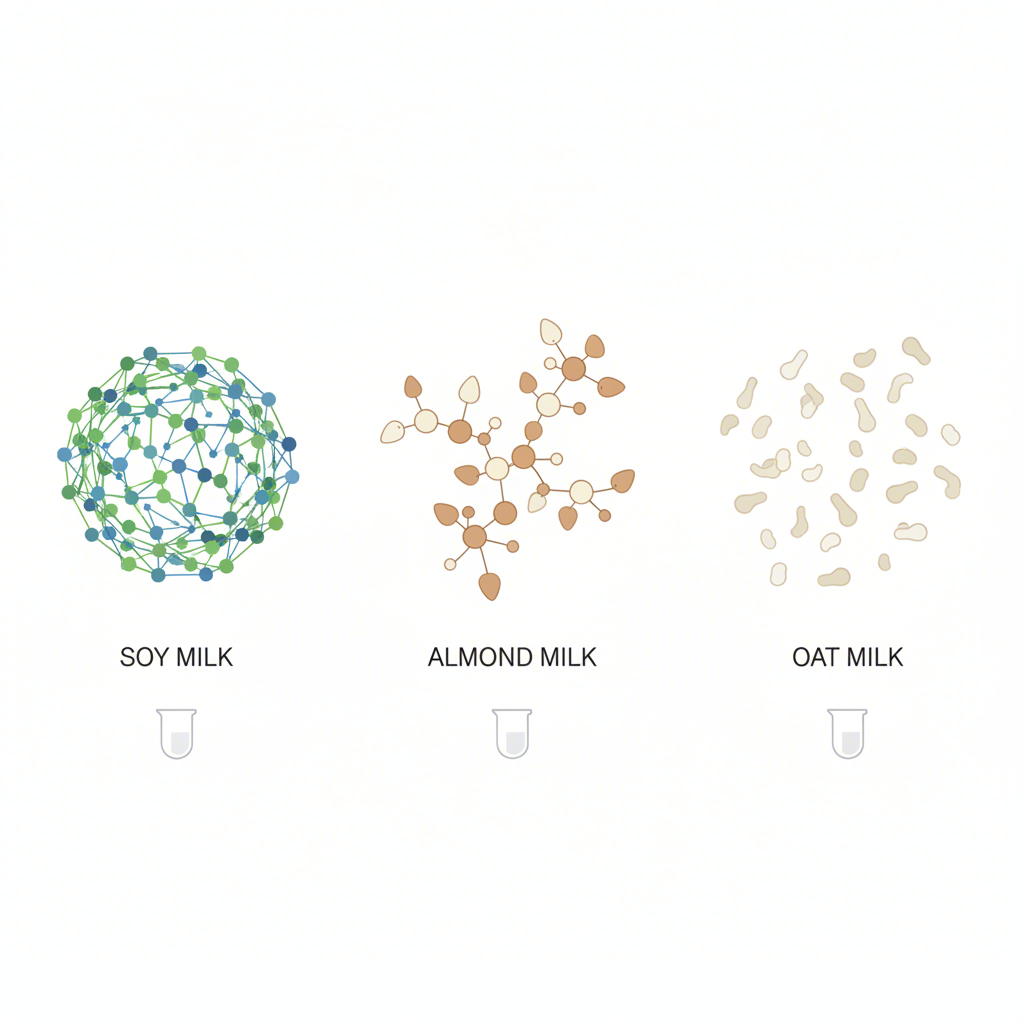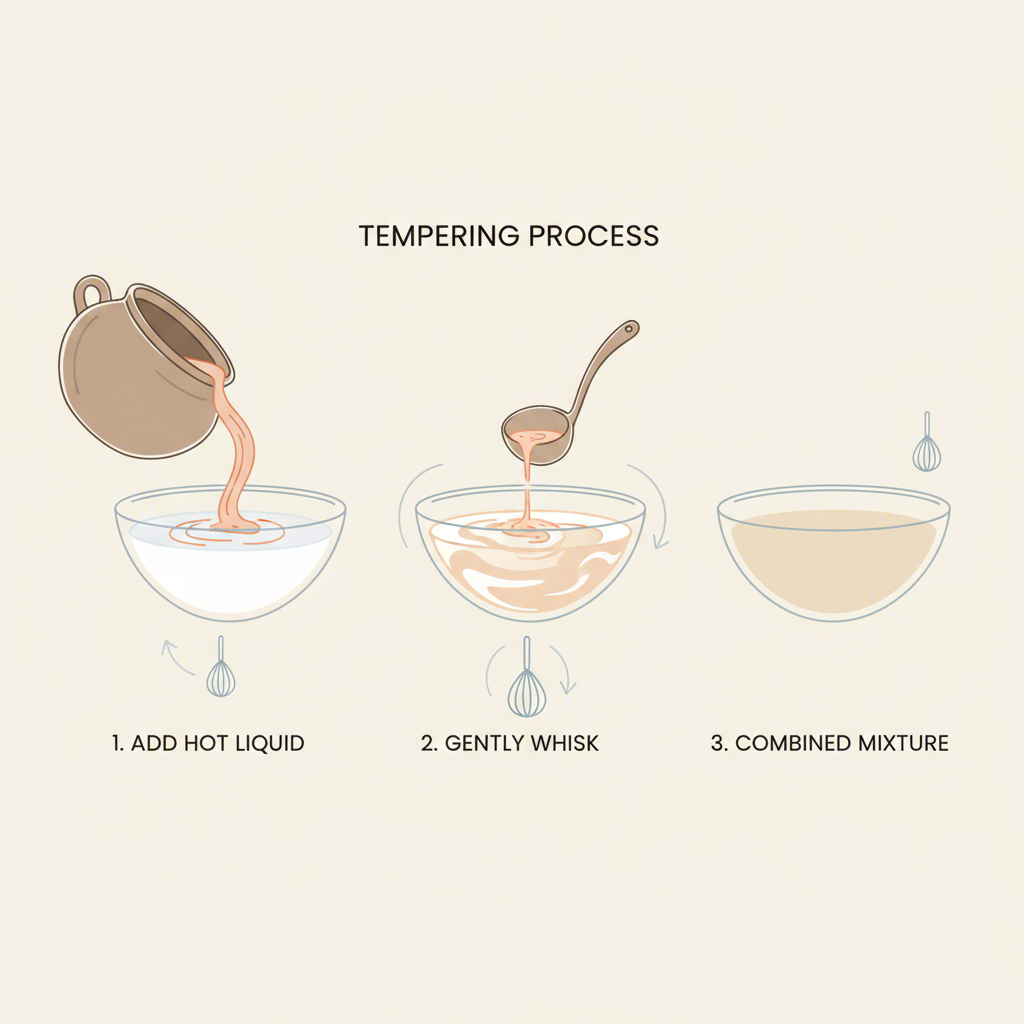TL;DR
The best soy milk for cooking savory dishes is an unsweetened, unflavored variety with a high protein content and minimal additives. Its neutral taste, creamy texture, and superior heat stability allow it to mimic dairy milk effectively in sauces, soups, and casseroles without adding unwanted sweetness or curdling. Brands like Silk Organic Unsweetened are top-rated for their creamy consistency and clean flavor.
Why Soy Milk Excels in Savory Cooking
When navigating the world of dairy-free alternatives, soy milk consistently emerges as the top choice for savory culinary applications. Its unique composition gives it a distinct advantage over other plant-based milks like almond, oat, or rice. The primary reason for its superiority lies in its protein content. Soy milk typically contains around 5-7 grams of protein per serving, a figure much closer to dairy milk than its plant-based counterparts. This high protein content is crucial for providing structure and stability in recipes, preventing the dreaded separation or curdling that can occur when heating lower-protein milks. As noted by culinary experts, this makes it an ideal binder in batters and a reliable base for rich sauces.
Beyond protein, soy milk’s balanced fat content contributes to a creamy, satisfying mouthfeel that effectively replicates the richness of whole milk in dishes like mashed potatoes, creamy tomato soup, or a classic béchamel sauce. Its ability to withstand higher temperatures without breaking makes it a dependable choice for simmering and boiling. While some other plant milks can curdle when they hit a hot pan, soy milk generally holds its emulsion, ensuring a smooth, consistent texture in your final dish.
However, it’s worth noting that some chefs find that soy milk can develop a slightly ‘beany’ flavor when cooked over direct, high heat. This is often mitigated by using high-quality brands and incorporating it into complex dishes where other flavors dominate. For most home cooks, the versatility and reliability of soy milk make it the most effective one-to-one substitute for dairy milk in savory cooking.
Soy Milk vs. Other Plant Milks for Savory Dishes
| Plant Milk | Key Characteristics | Best For | Potential Issues |
|---|---|---|---|
| Soy Milk | High protein, creamy texture, heat stable | Sauces, soups, baking, general cooking | Can develop a ‘beany’ taste if overheated |
| Almond Milk | Low protein, thin consistency, nutty flavor | Smoothies, light soups | Prone to curdling, can add unwanted flavor |
| Oat Milk | Naturally sweet, creamy, thickens when heated | Lattes, sweet baking, some creamy soups | Sweetness can clash with savory flavors |
| Rice Milk | Very thin, watery, low in protein and fat | Glazes, very light liquids | Too thin for creamy sauces, lacks richness |

The Ultimate Checklist: How to Select the Perfect Soy Milk
Choosing the right soy milk from the grocery store shelf is the most critical step to achieving culinary success. Not all soy milks are created equal, and a poor choice can easily disrupt the flavor balance of your dish. By focusing on a few key criteria, you can ensure you pick a product that enhances, rather than hinders, your savory creations.
The most important rule, echoed by chefs and food experts, is to always select an unsweetened variety. Sweetened or vanilla-flavored soy milks contain added sugars that will clash intensely with savory ingredients, leading to a confusing and often unpleasant taste. Always check the label for the word “Unsweetened.”
Beyond that, consider the following factors:
- Minimal Ingredients: The best soy milks often have the shortest ingredient lists. Look for brands that primarily contain just water and soybeans. Some may include a small amount of salt for flavor or vitamins for fortification, but try to avoid those with a long list of gums, thickeners, and added oils, which can alter the texture and taste.
- Neutral Flavor Profile: A great cooking soy milk should taste clean and neutral, not overly grassy or ‘beany.’ As taste tests from reviewers at Sporked have shown, some brands excel at delivering a creamy taste without a strong soy aftertaste, making them more versatile.
- Protein and Fat Content: Check the nutrition panel. Higher protein (at least 4g per serving) and fat (around 3-4g per serving) content will generally yield a creamier, more stable milk that performs better under heat.
- Shelf-Stable vs. Refrigerated: Both options work well for cooking. Shelf-stable (aseptic) cartons are convenient to keep in the pantry, while refrigerated versions might be preferred by those who use soy milk frequently. The performance difference in cooking is usually negligible between the two formats of the same brand. For those seeking ultimate control over ingredients, a resource like the guide to the best plant milk makers can help you craft fresh, additive-free milk at home.
Top-Rated Soy Milks for Savory Dishes: A Head-to-Head Comparison
After establishing the criteria for a great cooking soy milk, the next step is identifying the brands that deliver. Based on expert taste tests and culinary reviews, a few standout products consistently rise to the top for their performance in savory recipes. These brands are praised for their neutral flavor, creamy texture, and reliability in the kitchen.
Comparison of Recommended Soy Milks
| Brand | Key Feature | Flavor Profile | Best For |
|---|---|---|---|
| Silk Organic Unsweetened | Ultra-creamy texture | Neutral, clean, non-beany | All-purpose use, especially creamy sauces and soups |
| O Organics Unsweetened | Excellent shelf-stable option | Neutral and versatile | Pantry stocking, general cooking and baking |
| Westsoy Organic Unsweetened | Simple ingredients (water, soybeans) | Mildly beany, very pure | Purists who want no additives |
| Pacific Foods Ultra Soy Original | Very thick and rich | Slightly beany, very creamy | Hearty chowders and thickening dishes |
Detailed Reviews
Best Overall: Silk Organic Unsweetened
Praised for having a texture that closely resembles whole dairy milk, Silk’s organic unsweetened variety is a top performer. It’s exceptionally creamy with a clean, neutral flavor that doesn’t overpower other ingredients. This versatility makes it the perfect all-purpose soy milk for any savory task, from creating a velvety alfredo sauce to enriching a vegetable gratin. Its lack of a strong ‘beany’ aftertaste is a significant advantage.
Best Shelf-Stable: O Organics Unsweetened
For those who prefer to keep a backup in the pantry, O Organics (a Safeway/Albertsons brand) offers a fantastic shelf-stable option. It maintains a pleasant thickness and creamy texture without the pronounced beany flavor that sometimes characterizes aseptic milks. Its neutral profile means you can confidently use it for both savory and sweet applications without a second thought.
Best for Purists: Westsoy Organic Unsweetened
If your goal is to find the cleanest label, Westsoy is an excellent choice. Often made with just two ingredients—organic soybeans and water—it offers a pure, unadulterated soy flavor. While some find it has a more noticeable soy taste, it’s a reliable and straightforward option for those looking to avoid all additives, gums, and thickeners.
Expert Tips for Cooking with Soy Milk
While soy milk is a robust dairy substitute, a few simple techniques can guarantee perfect results every time and prevent common issues like curdling or an uneven texture. Mastering these tips will elevate your dairy-free cooking and allow soy milk’s best qualities to shine through.
According to a helpful guide from Pacific Foods, temperature control is key. Rapid temperature changes can sometimes cause any milk—dairy or plant-based—to separate. By following a few best practices, you can ensure your sauces and soups remain smooth and creamy.
Follow these essential steps for success:
- Temper Your Milk: Never add cold soy milk directly to a boiling or very hot liquid. This shock can cause it to curdle. Instead, temper it by slowly whisking a small amount of the hot liquid into the soy milk in a separate bowl. Once the milk is warmed, you can gradually stir the mixture back into the main pot.
- Build a Roux for Thickness: For thick, stable sauces like gravy or béchamel, start with a roux (a cooked paste of equal parts fat and flour). Cooking the flour in a fat like vegan butter or oil coats the starch granules, allowing them to absorb the soy milk without clumping and creating a reliably smooth, thick sauce.
- Whisk Constantly When Heating: When heating soy milk on its own or as part of a sauce, whisk it frequently over medium heat. This distributes the heat evenly and prevents a skin from forming on top or scorching on the bottom of the pan. Avoid bringing it to a rapid boil.
- Use a 1:1 Substitution Ratio: In most savory recipes that call for dairy milk, you can substitute an equal amount of unsweetened soy milk. This simple one-to-one ratio makes converting your favorite recipes straightforward and hassle-free.

Frequently Asked Questions
1. What plant-based milk is best to cook with?
For savory cooking, soy milk is widely considered the best plant-based option. Its high protein and fat content, which is the most similar to cow’s milk, allows it to withstand heat without curdling and provides a creamy texture essential for sauces, soups, and baking. While oat milk can be good for creaminess, its natural sweetness can sometimes interfere with savory flavors. Almond and rice milks are generally too thin and low in protein to create rich, stable sauces.
